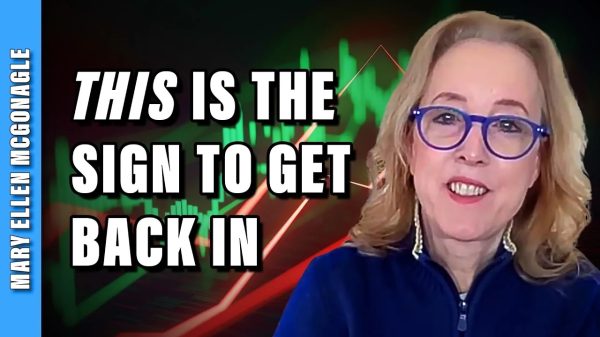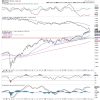Romina Boccia and Dominik Lett
The Congressional Budget Office (CBO) released its annual Budget and Economic Outlook, providing 11‐year fiscal projections for 2024 to 2034. The CBO’s new report arrives as Congress gears up for another budget fight with annual discretionary spending and a supplemental Ukraine‐border security deal hanging in the balance. While these issues capture headlines, the real drivers of the growth in federal spending that the CBO highlights are Social Security and Medicare, which neither Democrats nor Republicans are ready to address. As a result, the current fiscal situation is unsustainable. Excessive spending and rising interest costs will drive debt to record‐high levels within the decade, threatening America’s fiscal and economic security.
Last year, we witnessed the official end of the COVID-19 pandemic national emergency (one of the most expensive emergencies ever), the adoption of new discretionary spending limits that have yet to be enforced, and the downgrading of the US debt by a major credit rating agency for the second time in history (the first was in 2011 by S&P). In its press release, Fitch Ratings explained, “The rating downgrade of the United States reflects the expected fiscal deterioration over the next three years, a high and growing general government debt burden, and the erosion of governance.”
Not much has changed since Fitch’s acknowledgment of what fiscal experts, including yours truly, have been pointing out for some time now. The CBO’s latest report reinforces that the US fiscal health is worsening, and congressional budgetary mismanagement and an abdication of responsibility for automatic entitlement spending growth are at fault. Here are some key highlights:
Debt Grows to 116 Percent of GDP by 2034
Federal publicly held debt (debt borrowed from credit markets) is currently $27.1 trillion. Here are a few debt milestones the United States will hit:
- 2025: public debt exceeds the annual economic output of the entire country, measured by gross domestic product (GDP)
- 2028: public debt exceeds the World War II record high of 106 percent of GDP
- 2034: public debt rises to an unprecedented 116 percent of GDP
The fiscal picture becomes far more dire when extended beyond the traditional 10‐year budget window. The CBO projects that debt will reach a jaw‐dropping 172 percent of GDP by 2054 (see Figure 1). The long‐term debt trajectory is unsustainable, as CBO Director Phillip Swagel, Federal Reserve Chair Jerome Powell, and many others attest.
Debt is likely already harming the economy. Most economic literature suggests a debt‐to‐GDP ratio above 78 percent slows economic growth. As debt rises, it creates burdensome consequences, crowding out private investment, reducing incomes, and increasing interest rates. Without a course correction, the United States risks either a depressed economy below its full potential with recurring bouts of inflation that eat away at Americans’ savings and incomes or a sudden and severe fiscal crisis where bondholders lose confidence in the Treasury’s ability or willingness to service debt. One likely path: a depressed economy and excess inflation will eventually trigger said crisis, with that outcome becoming increasingly likely over the next 15–20 years.
Trillion‐Dollar Deficits Are Here to Stay
For fiscal year (FY) 2023, the budget deficit (how much spending exceeds revenues) was $1.7 trillion. That’s an increase of $320 billion, or 23 percent, over the FY 2022 deficit. If the CBO excludes “savings” from the Supreme Court’s strike down of President Biden’s proposed student loan forgiveness scheme, the FY 2023 deficit is $2 trillion. As a percentage of GDP, FY 2023’s deficit was 6.2 percent. That’s the largest deficit‐to‐GDP ratio observed in US history outside of major wars or severe recessions.
Over the next decade, excessive spending is the primary cause of elevated deficits. The CBO projects outlays growing from $6.5 trillion in 2024 to $10 trillion in 2034, a 54 percent increase. Meanwhile, revenues increase from $4.9 trillion in 2024 to $7.5 trillion in 2034, a 51 percent increase. The gap between spending and revenue becomes more apparent when comparing projections to historical averages (1974–2023). As shown in Figure 2, projected outlays are significantly higher than the 50‐year historical average.
These estimates are likely optimistic as the CBO isn’t in the business of making realistic fiscal assumptions that reflect political history. Rather, the CBO takes current policy and legislative deadlines as a given and simply extends these assumptions over time. As former CBO Director Doug Holtz‐Eakin points out:
“The CBO assumes that current law will evolve over the next 10 years exactly as it is currently written down. So, for example, nearly all provisions of the 2017 Tax Cuts and Jobs Act will sunset at the end of 2025, raising taxes by about $3 trillion over the next 10 years. From a budget perspective, this produces a sharp reduction in the deficit and a more favorable overall debt picture. From an economic perspective, this sharp tax increase will be a strong headwind to growth. There is, however, no way that this will happen, so both the budget and economic outlooks will be misleading. Interpret the CBO projections accordingly.”
Entitlements and Interest Costs Dominate the Long‐Term Fiscal Picture
Entitlements, including Social Security and health care programs, are the largest cause of spending‐driven deficit growth. Between 2024 and 2034, Social Security spending will grow from $1.5 trillion to $2.5 trillion. Over the same time frame, major health care programs, including Medicare and Medicaid, will grow from $1.6 trillion to $2.8 trillion. Combined, Social Security and major health care programs represent 63 percent of spending growth.
The two largest entitlement programs, Social Security and Medicare, are on the path to insolvency. Medicare’s hospital insurance trust fund will be exhausted by 2031. Social Security’s Old‐Age and Survivors Insurance Trust Fund will be exhausted by 2033. Without reform, beneficiaries will face indiscriminate cuts.
Interest costs are the other major driver of higher spending over the next decade. From 2024 to 2034, interest costs will increase from $870 billion to $1.6 trillion, an 87 percent increase. According to CBO’s projections, interest costs will exceed discretionary defense spending next year. As interest costs consume a larger share of tax revenues (22 percent by 2034), and as non‐interest spending continues to grow, the government will end up borrowing yet more money at an accelerating pace just to fund program spending that’s already on the books.
Over the long‐term 30‐year spending window, Social Security, health care programs, and interest costs boost federal spending to 30 percent of GDP. These three budget categories will grow by 8 percentage points of GDP from 2024 to 2054. Every other major budget category declines or stays flat as a percentage of the economy over the same period, under current policy. Figure 3 displays major budget categories as a share of GDP.
Cultivating a Culture of Fiscal Responsibility
As bleak as the US fiscal outlook is, there is some light at the end of the tunnel. The House Budget Committee recently passed the Fiscal Commission Act, which seeks to stabilize the debt over 15 years, educate the public on the nation’s deteriorating fiscal state, and improve the Medicare and Social Security’s trust funds’ solvency over a 75‐year window. A well‐designed fiscal commission, alongside other budget reforms, could put the United States on the right path. If Congress kicks the can down the road yet again, it will only make the necessary reforms more severe and invite economic deterioration. Let’s hope legislators will choose to work together to make the compromises needed for a sustainable fiscal future that enables this and the next generation to enjoy a freer, more vibrant, and stronger America.





















